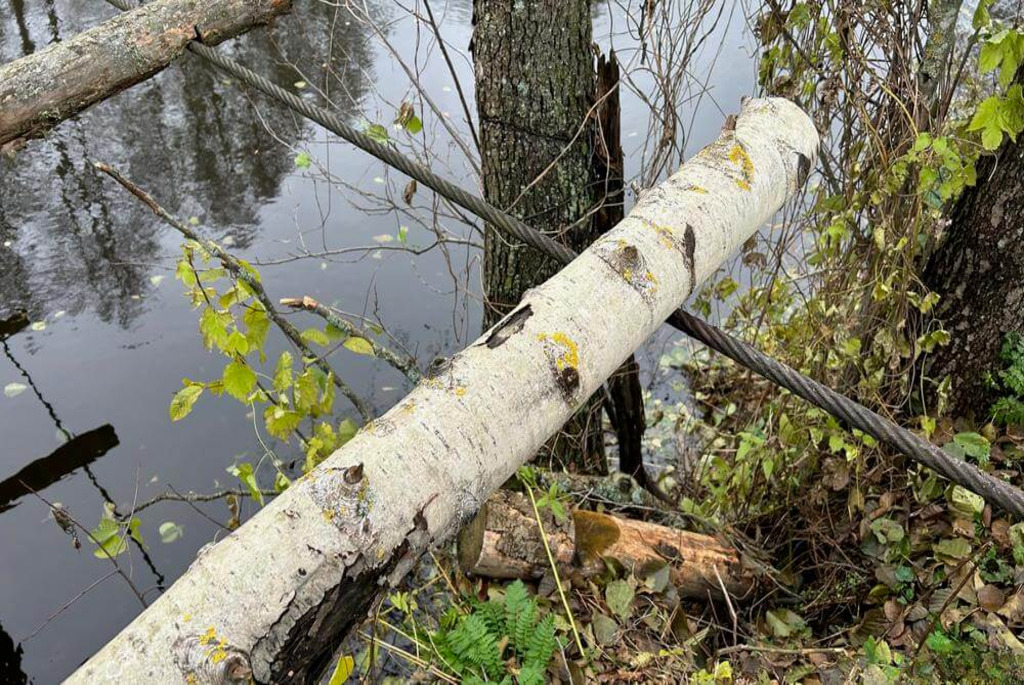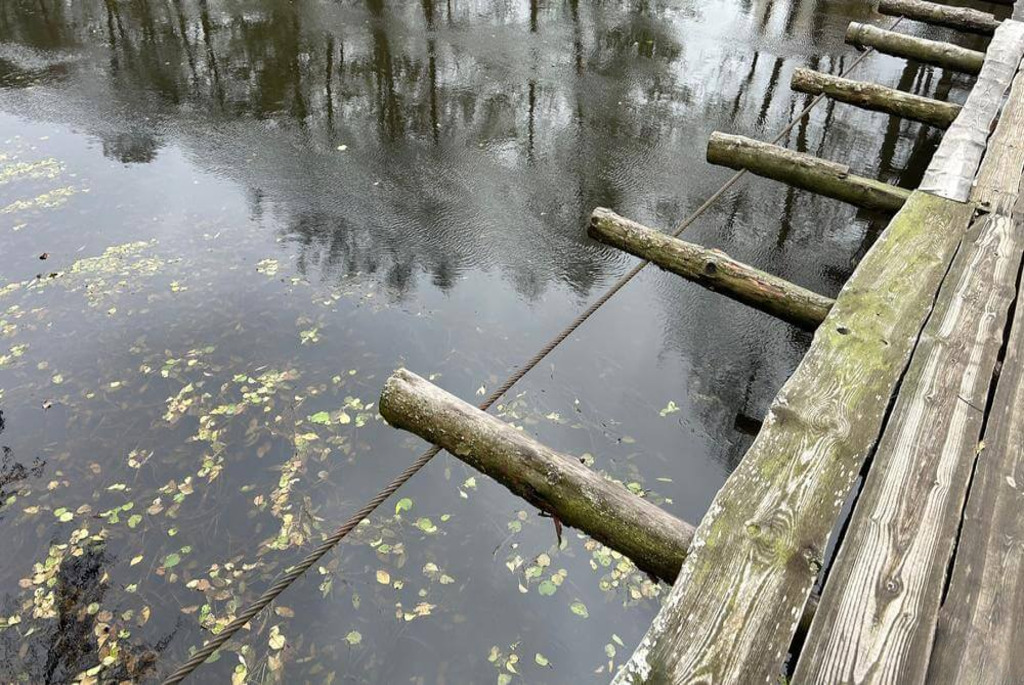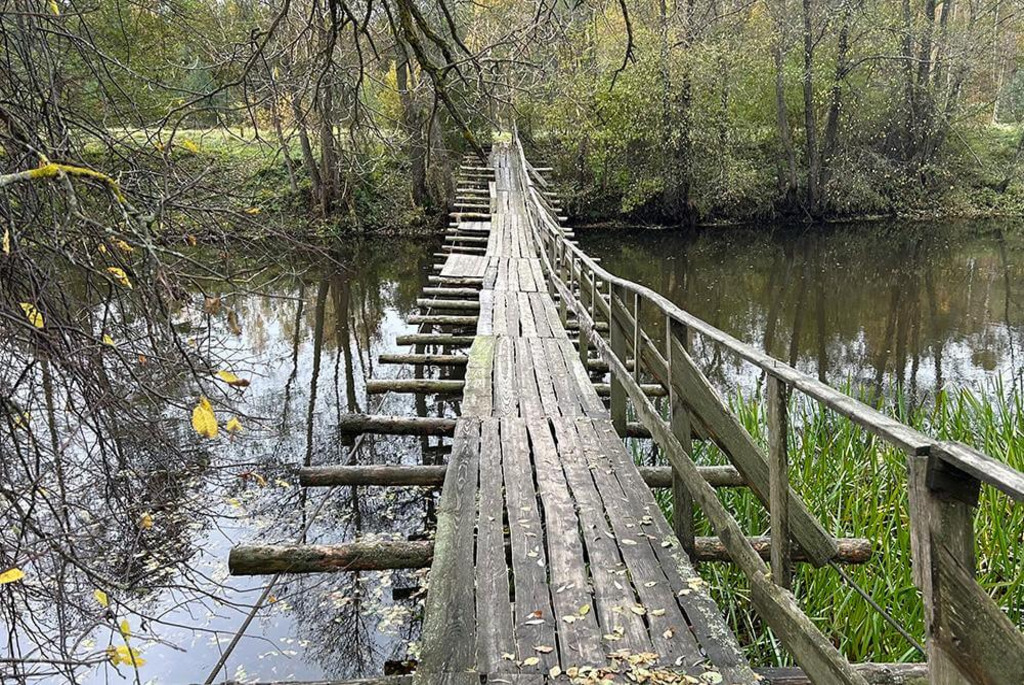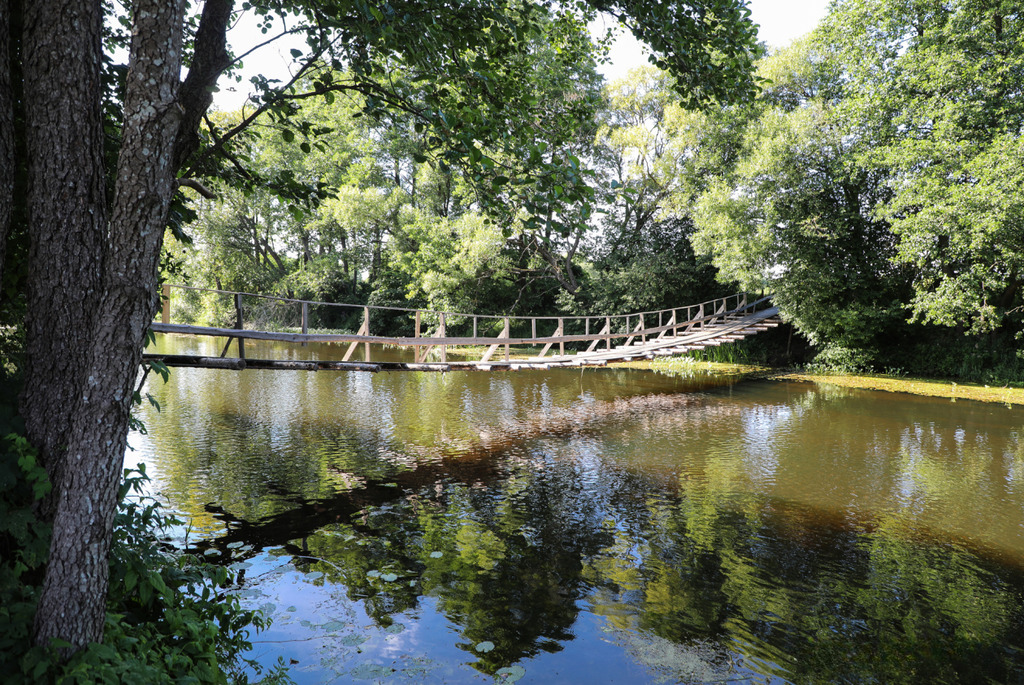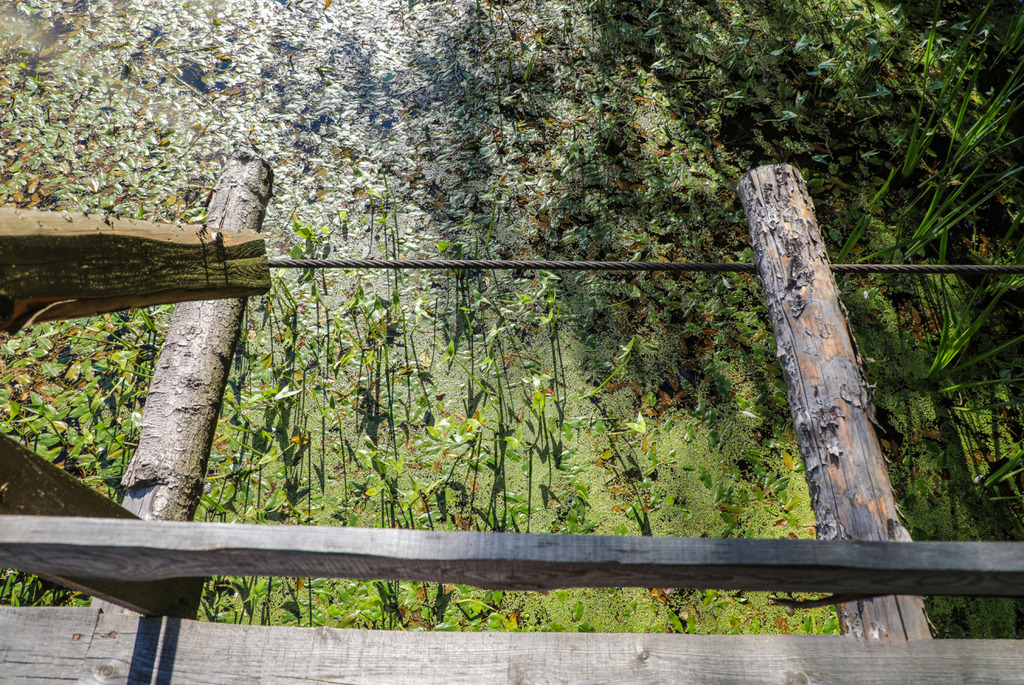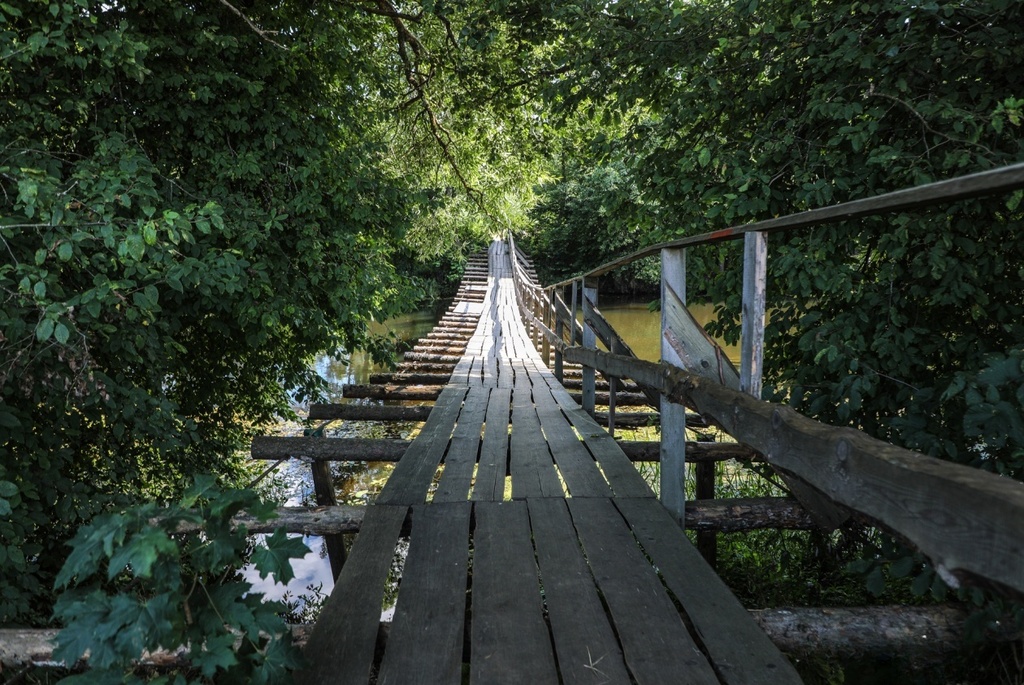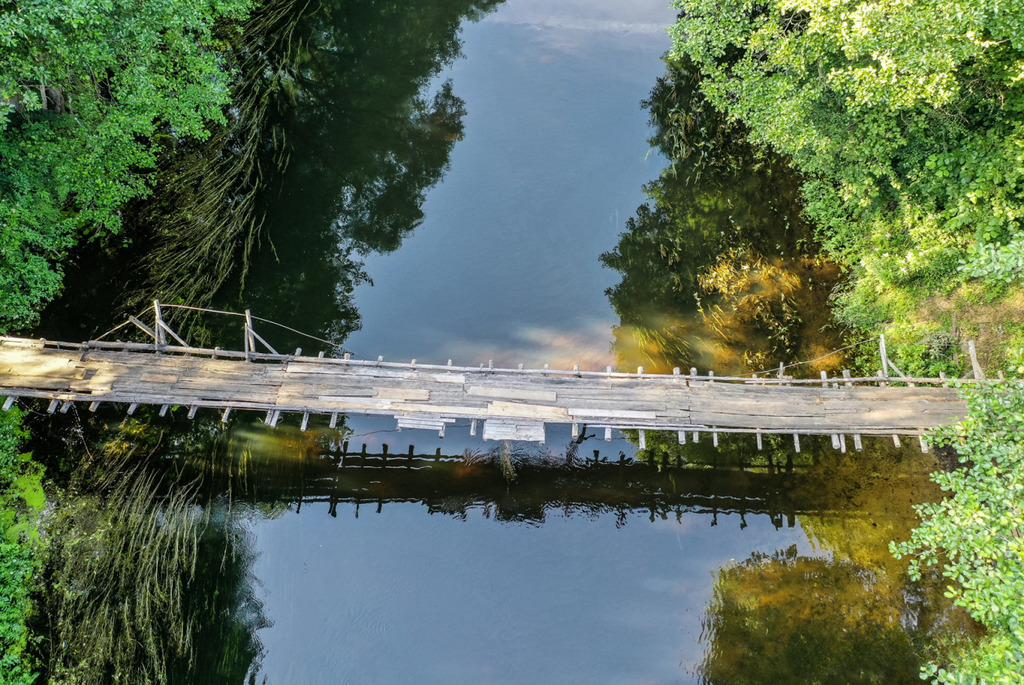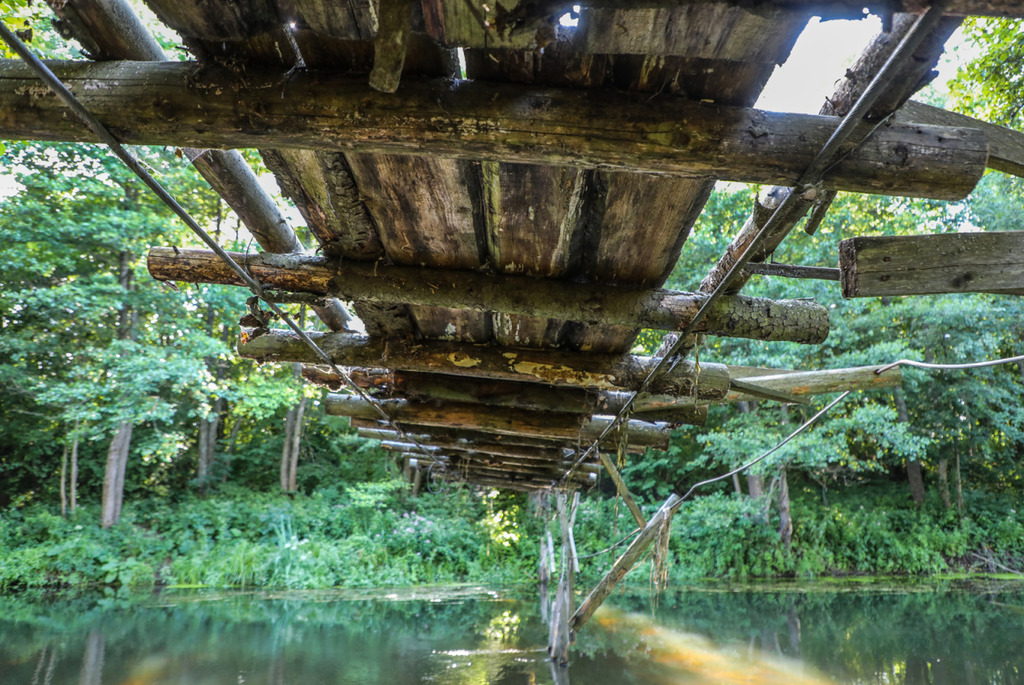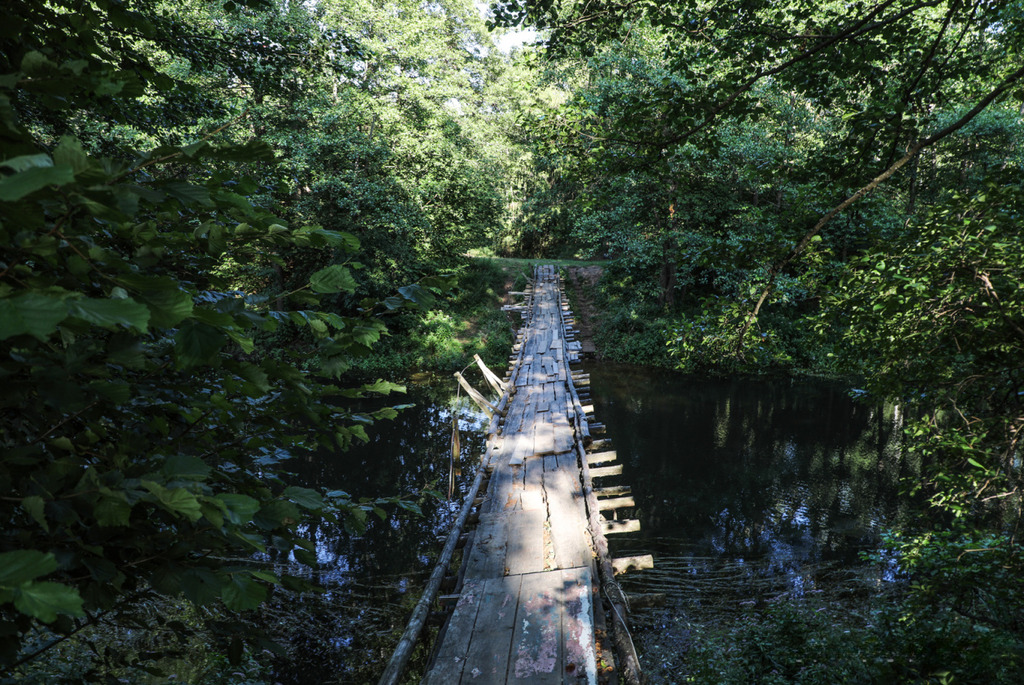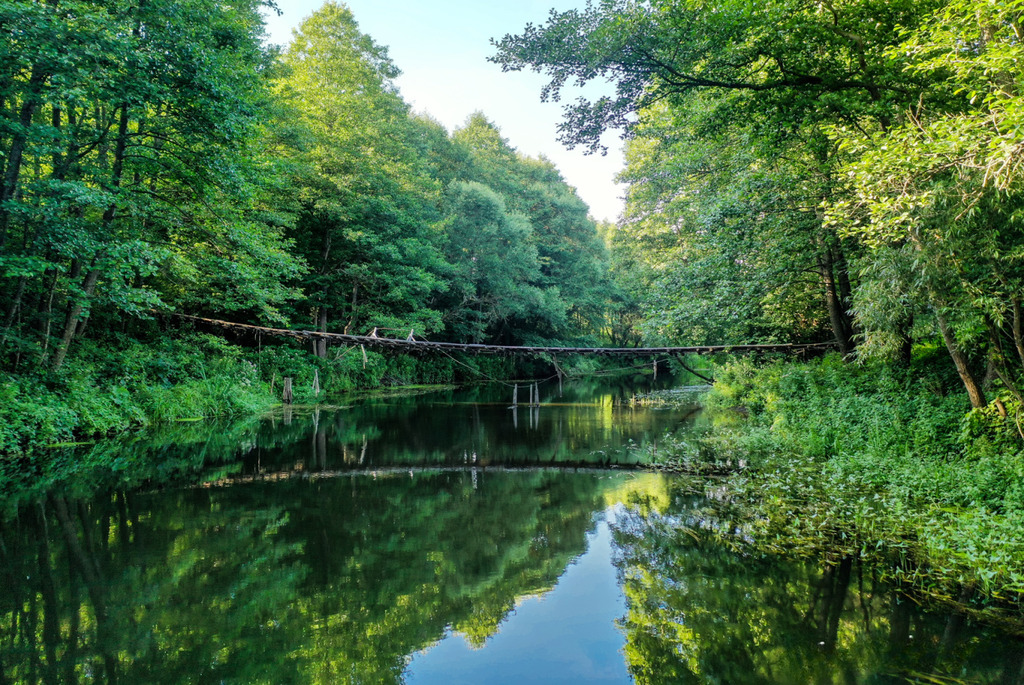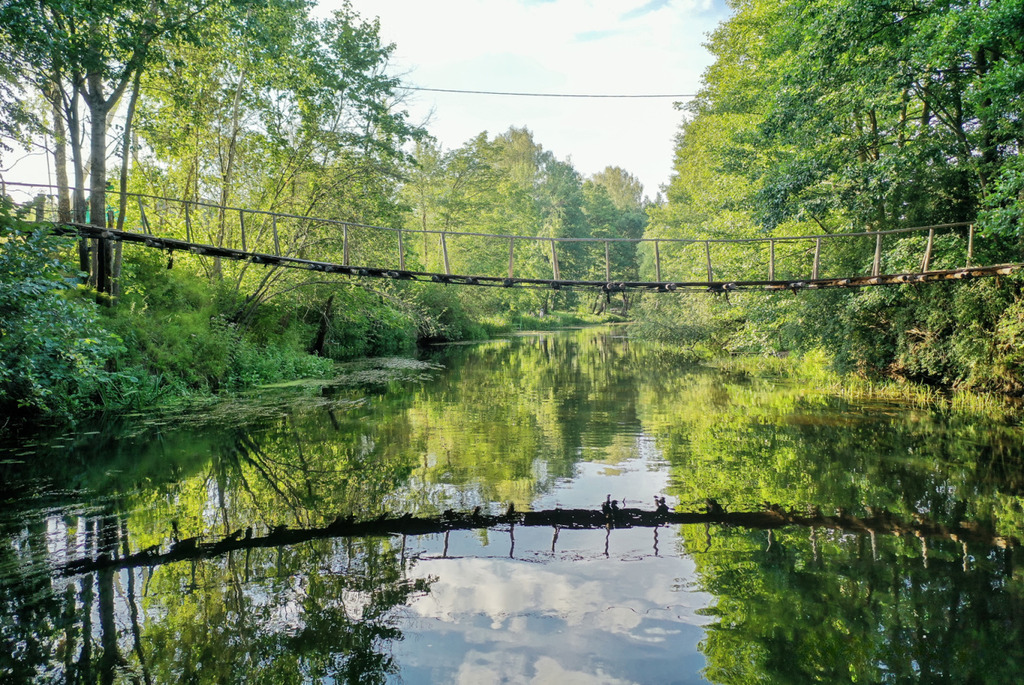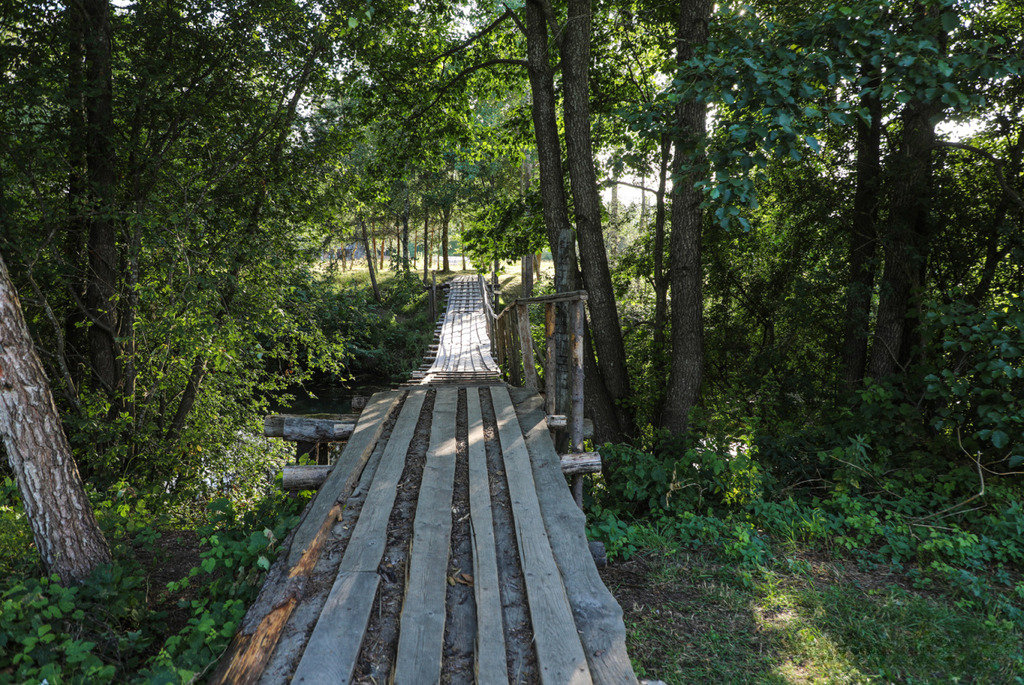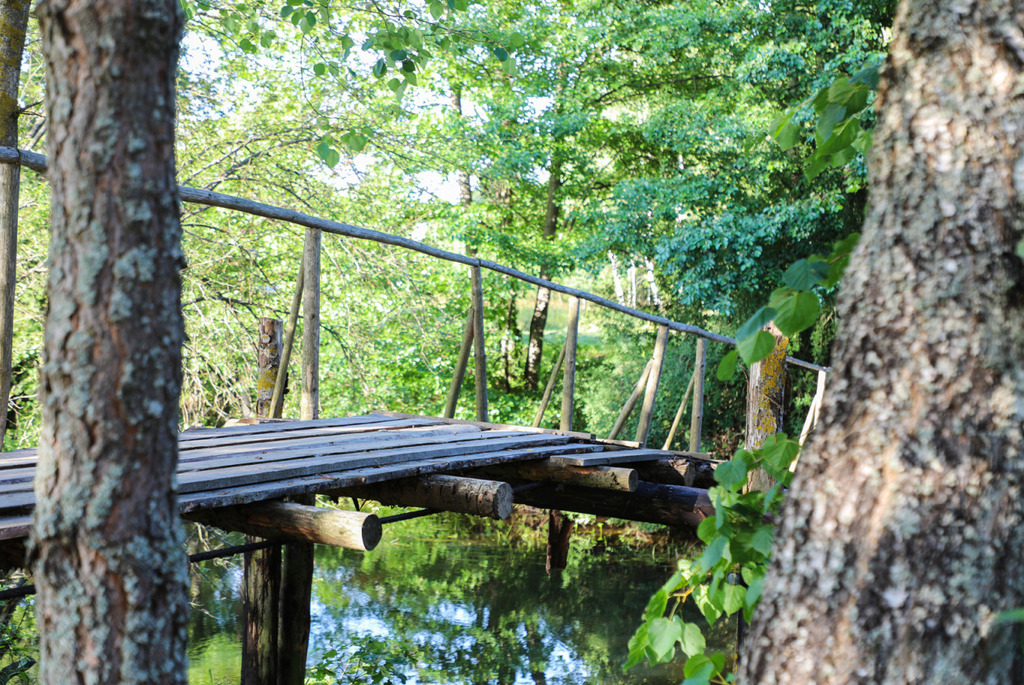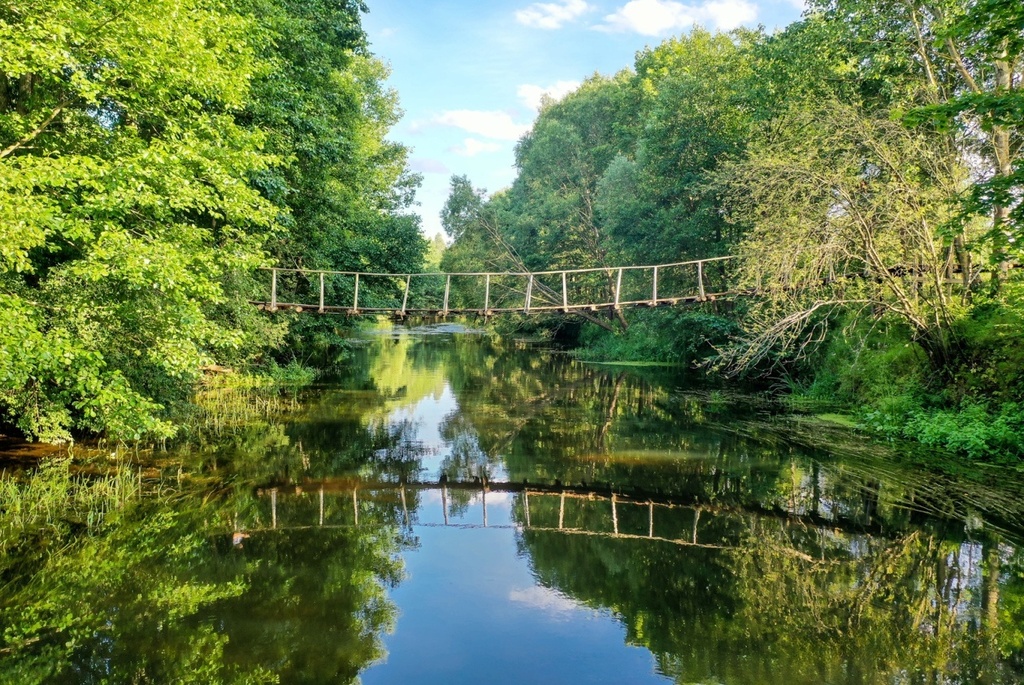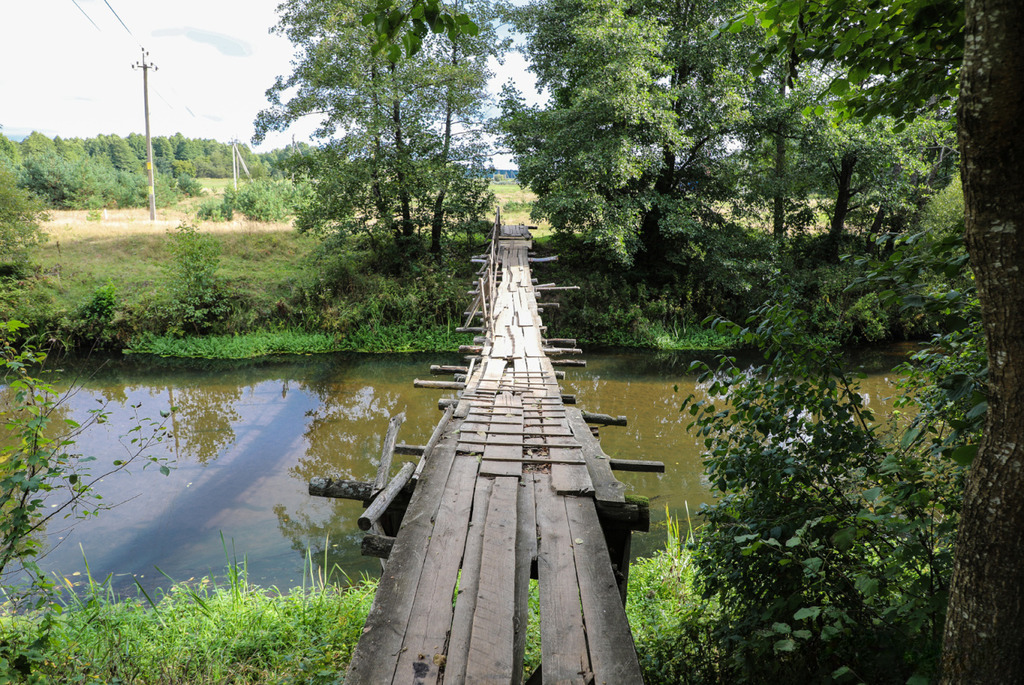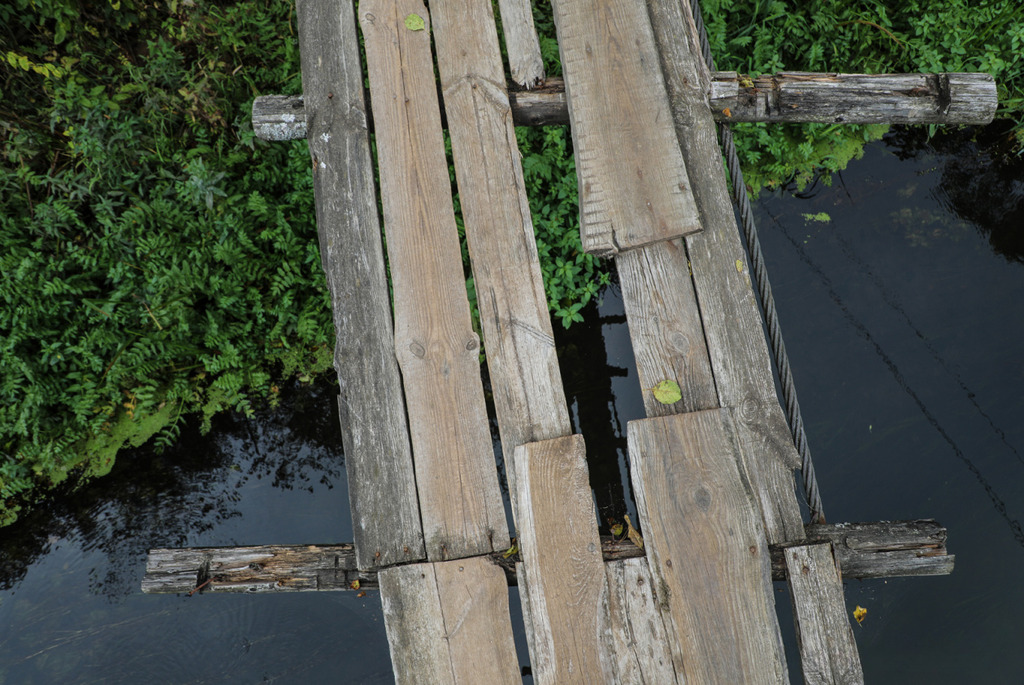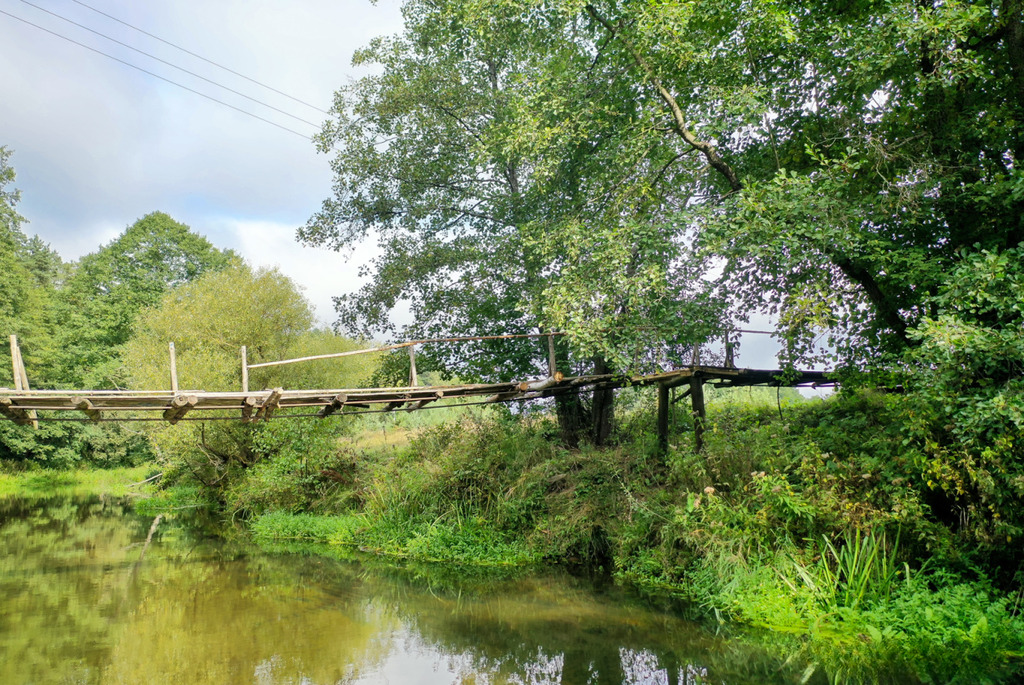Why It’s Worth Visiting
The suspension bridges over the Narachanka are not only original structures built by local residents but also part of a living cultural landscape. There are no crowds of tourists, cafés, or souvenir shops here. Instead, you’ll find untouched nature, rustling leaves, birdsong, and the gentle swaying of the bridge beneath your feet – everything that helps you disconnect from the hustle and bustle of city life. Add to that the chance to see villages where time seems to have stood still, and you’ve got a route you won’t forget.
The Best Bridges on the Narachanka: Where to Go
Ruchytsa – Krasnitsa Bridge
📍 Coordinates: 54.45088, 26.66602
One of the most popular and photogenic bridges, connecting the villages of Ruchytsa and Krasnitsa. The solid deck, handrails, and even wooden platforms for rest make it perfect for a leisurely stroll and photos. It is considered the longest of the suspension bridges in the area. Nearby is a historical site – the former summer residence of Michał Kleofas Ogiński. Though only remnants remain, the spirit of that era still lingers.
Vojdeni – Dolhae Bridge
📍 Coordinates: 54.48251, 26.71886
Located slightly north of the previous bridge, this one stands out for its structure. The handrails are made from sagging steel cables, which add a sense of thrill to the crossing. The surrounding forest is dense, wild, and incredibly scenic – perfect for adventurous spirits.
Nabiarežnaja – Paromets 2 Bridge
📍 Coordinates: 54.50005, 26.73593
One of the most recently renovated bridges: its deck was replaced in 2019, with anti-slip crossbars added. According to legend, the military helped build it. Nearby, there’s a massive oak tree decorated with ribbons. Locals believe the tree grants strength if you leave a piece of bread under its bark and tie a ribbon to it. With legends, river views, and tidy riverside homes, this spot has a particularly magical atmosphere.
Narach – Popawtsy Bridge
📍 Coordinates: 54.56379, 26.72008
The northernmost of the Narachanka crossings. It’s harder to reach, but the views and peaceful solitude are absolutely worth the trip. You won’t find crowds here – just you, nature, and the gentle creaking of wooden boards beneath your feet.
Remains of the Bridge in Prynta
📍 Coordinates: 54.49523, 26.73281
Although the deck collapsed long ago, steel cables remain, and there’s easy access to the river. It’s a great spot for camping – flat meadows, old oak trees, and tranquil silence. You can include this stop in your route as a scenic rest point.
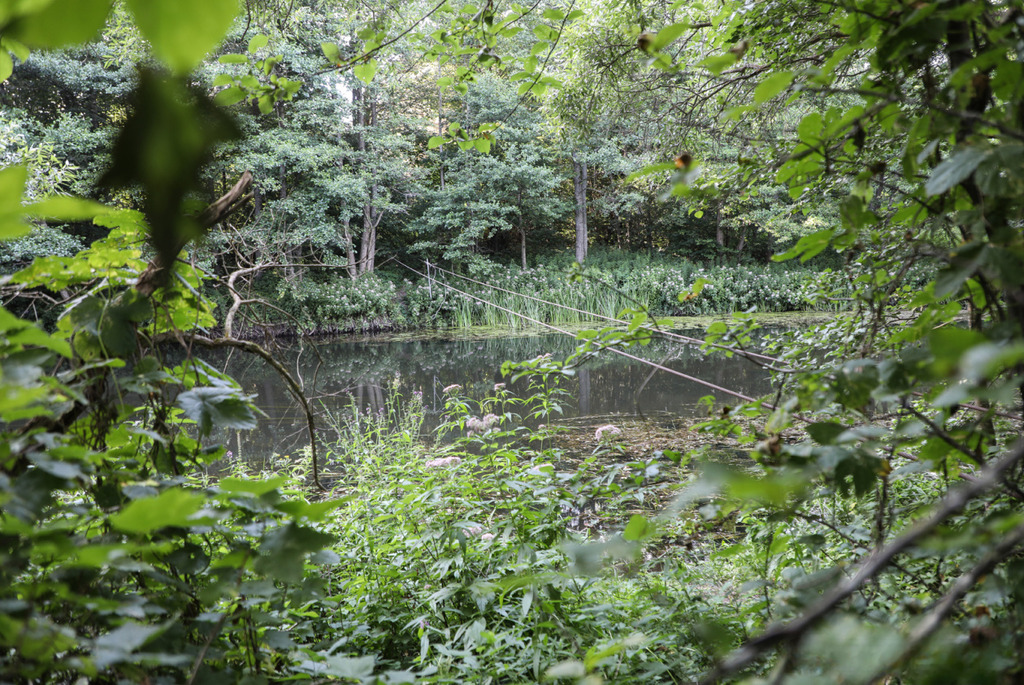
How to Plan Your Trip: Tips for Travelers
It’s best to set out early in the morning so you can take your time and enjoy each bridge, village, and forest path. Vileyka is accessible by car or public transport – buses and minibuses regularly run from Minsk, and the journey takes about two hours.
If you’re driving, park in Vileyka and continue on foot – the paths to the bridges are narrow and best explored at a walking pace. Start in Ruchytsa, then head to Vojdeni and finish your route in Nabiarežnaja. The walking portion is about 10 km and is doable even at a relaxed pace.
For those who want to stay longer, consider camping overnight. The area near the village of Prynta is great for pitching a tent: secluded, green, and riverside – an almost ready-made campsite.
Don’t forget to bring water, snacks, comfortable shoes, and a phone charger. Cell signal may be spotty, so offline maps are a good idea.
A Few Helpful Tips Before You Go
The suspension bridges over the Narachanka aren’t just beautiful crossings – they are part of Belarus’s unique cultural heritage. Built by locals and still maintained by village communities, many of these bridges are not protected by law or serviced officially, so please treat them with care.
While walking, be cautious: avoid crowding the bridge, don’t run, and follow basic safety rules. Please don’t leave litter – the pristine nature here is part of the charm, and it’s worth preserving.
These bridges are more than just a weekend route – they’re a chance to connect with the real, living Belarus, where history, nature, and people continue to shape something truly special.
